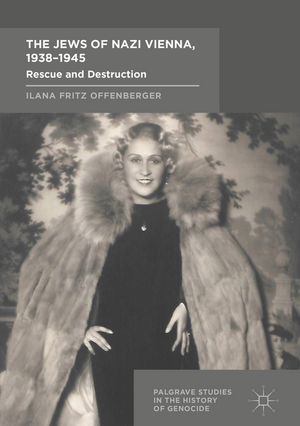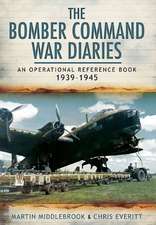The Jews of Nazi Vienna, 1938-1945: Rescue and Destruction: Palgrave Studies in the History of Genocide
Autor Ilana Fritz Offenbergeren Limba Engleză Hardback – 19 mai 2017
This book examines Jewish life in Vienna just after the Nazi-takeover in 1938. Who were Vienna’s Jews, how did they react and respond to Nazism, and why? Drawing upon the voices of the individuals and families who lived during this time, together with new archival documentation, Ilana Offenberger reconstructs the daily lives of Vienna’s Jews from Anschluss in March 1938 through the entire Nazi occupation and the eventual dissolution of the Jewish community of Vienna. Offenberger explains how and why over two-thirds of the Jewish community emigrated from the country, while one-third remained trapped. A vivid picture emerges of the co-dependent relationship this community developed with their German masters, and the false hope they maintained until the bitter end. The Germans murdered close to one third of Vienna’s Jewish population in the “final solution” and their family members who escaped the Reich before 1941 chose never to return; they remained dispersed across the world. Thisis not a triumphant history. Although the overwhelming majority survived the Holocaust, the Jewish community that once existed was destroyed.
| Toate formatele și edițiile | Preț | Express |
|---|---|---|
| Paperback (1) | 781.31 lei 6-8 săpt. | |
| Springer International Publishing – 7 aug 2018 | 781.31 lei 6-8 săpt. | |
| Hardback (1) | 786.66 lei 6-8 săpt. | |
| Springer International Publishing – 19 mai 2017 | 786.66 lei 6-8 săpt. |
Preț: 786.66 lei
Preț vechi: 959.34 lei
-18% Nou
Puncte Express: 1180
Preț estimativ în valută:
150.52€ • 158.00$ • 124.94£
150.52€ • 158.00$ • 124.94£
Carte tipărită la comandă
Livrare economică 10-24 aprilie
Preluare comenzi: 021 569.72.76
Specificații
ISBN-13: 9783319493572
ISBN-10: 3319493574
Pagini: 341
Ilustrații: XXIX, 321 p. 20 illus.
Dimensiuni: 148 x 210 x 26 mm
Greutate: 0.58 kg
Ediția:1st ed. 2017
Editura: Springer International Publishing
Colecția Palgrave Macmillan
Seria Palgrave Studies in the History of Genocide
Locul publicării:Cham, Switzerland
ISBN-10: 3319493574
Pagini: 341
Ilustrații: XXIX, 321 p. 20 illus.
Dimensiuni: 148 x 210 x 26 mm
Greutate: 0.58 kg
Ediția:1st ed. 2017
Editura: Springer International Publishing
Colecția Palgrave Macmillan
Seria Palgrave Studies in the History of Genocide
Locul publicării:Cham, Switzerland
Cuprins
List of Figures.- List of Tables.- Introduction.- Chapter 1: From the Opera to the Streets.- Chapter 2: The Anschluss Pogrom: Panic, Chaos, and Confusion for Vienna's Jews in March 1938.- Chapter 3: The IKG: Co-opted by the New Masters.- Chapter 4: Turning Point: Vienna to Dachau.- Chapter 5: Rescue and Destruction: Daily Life during a Mass Exodus.- Chapter 6: Escape! November Complications, but Emigration Continues.- Chapter 7: Transition to Deportation, 1941.- Chapter 8: Caught in the Vicious Cycle: From a Working Jewish Community to a Council of Jewish Elders.- Chapter 9: Epilogue. Going Home: The Aftermath of the Holocaust for the Jewish Community.- Bibliography.- Index.
Notă biografică
Ilana F. Offenberger is Lecturer in the Department of History at the University of Massachusetts, Dartmouth, USA. Her early research on Viennese Jewry was awarded the first annual Radomir Luza Prize for an outstanding work in Austrian and/or Czechoslovak history in 2012.
Textul de pe ultima copertă
This book examines Jewish life in Vienna just after the Nazi-takeover in 1938. Who were Vienna’s Jews, how did they react and respond to Nazism, and why? Drawing upon the voices of the individuals and families who lived during this time, together with new archival documentation, Ilana Offenberger reconstructs the daily lives of Vienna’s Jews from Anschluss in March 1938 through the entire Nazi occupation and the eventual dissolution of the Jewish community of Vienna. Offenberger explains how and why over two-thirds of the Jewish community emigrated from the country, while one-third remained trapped. A vivid picture emerges of the co-dependent relationship this community developed with their German masters, and the false hope they maintained until the bitter end. The Germans murdered close to one third of Vienna’s Jewish population in the “final solution” and their family members who escaped the Reich before 1941 chose never to return; they remained dispersed across the world. This is not a triumphant history. Although the overwhelming majority survived the Holocaust, the Jewish community that once existed was destroyed.
Caracteristici
Uses the voices of the individuals and families who lived during this time and new archival documentation to reconstruct the daily lives of Vienna’s Jews Creates a vivid picture of the co-dependent relationship this community developed with their German masters Focuses on the early stages of the genocide and emphasizes that the destruction of the Jews did not begin in the death camps but ended there


















